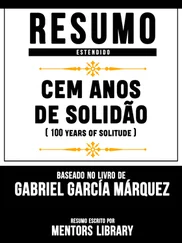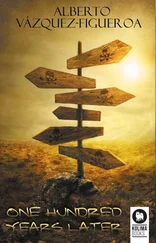The officers of the occupation forces were housed in luxurious hotels in the beautiful neighborhoods in the west of Paris.
Seeing Jünger gave me the idea of keeping a journal to make note of what I’m doing over the next few days in Paris. 5
The writer Ernst Jünger (1895–1995), who was a captain with the German military staff, was indeed living at the Hotel Raphael. It should be noted that he was the youngest recipient of the Prussian Pour le Mérite award in 1918. Although there is no material evidence, it seems rather certain that Kürz rewrote his text, at least in part, after Jünger’s Parisian Journals were published in 1949. See notes 13 and 43.
May 30, 1942
Between 2 and 4 in the morning, heard British planes, bombs not very far from here, dropped on the Renault factories. That’s what I call an act of terrorism.
There’s a big mirror in the hotel room. I think I look rather handsome in my uniform. One of the advantages of the war.
Visited Yersin, whom I met ten years ago when he came to study with Xanten. Tense atmosphere. Proposed he contribute to the review journal: his expertise in geometry would be very useful to us. He didn’t give me an outright no, but didn’t show much enthusiasm, either. For that matter, he hardly said anything. I gave him some food tickets, for his elderly father — I hope that will help convince him. 6
Catherine Billotte, daughter of Claude Yersin (1904–1997) stated (Interview, December 5, 2008) that her grandfather saved these tickets; he never used them. She added that her father had never criticized Morstauf’s attitude during the occupation, undoubtedly because of Morstauf’s status as a “broken face.” On this subject, she mentioned the trip Yersin had made with his own father near the front, even before the 1918 armistice occurred (Yersin was fourteen years old), in order to identify the body of one of his uncles.
Morstauf came to the Raphael while I was away. 7I think I’ll see him on Monday. He left me some reading material: two French newspapers ( La Gerbe and Jesuis partout 8 ) and a letter.
The mathematicians Christian Morstauf (1893–1996) and Heinrich Kürz had maintained a relationship as both scientists and friends ever since Morstauf’s trip to N. in 1932. They wrote each other many letters, which are held in Kürz’s Nachlass (collection) at the University of N. archives. From the start of the war, Kürz went to Paris several times, which means that he and Morstauf must have seen each other quite regularly.
La Gerbe ( The Sheaf ) and Jesuis partout ( I Am Everywhere ) were French collaborationist newspapers.
May 31, 1942
Sunday morning. Thought of Otto Zach again. Where is he exactly, and in what condition? This is a time when many brave men will go through the gates of hell — and many will have seen it even before their own deaths.
Walked across Paris to the Abwehr headquarters at the Hotel Lutetia, where Blank, 9one of my friends from Gymnasium, is assigned, and where they even work on Sundays. Had a drink with him. Then, on Boulevard Saint-Michel, I contemplated the fountain’s archangel while thinking of it as a symbol of our victory and the peace that will follow.
This friend also appears in Kürz’s letters, sometimes under the name of Leutnant Blank, sometimes under that of Doktor Blank.
Had dinner with Wallerant at a rather popular restaurant, Le Mahieu. 10We traded news with each other, in particular of Sir Michael Vendall, who was evacuated from London to Bangor, Wales, with his students, so he gets to keep on phlegmatically playing bridge while our compatriots are killed by the bombs dropped by his. 11Wallerant spoke to me about a conference at Cambridge, just before the war, in which Xanten had taken part, and how he had seemed so happy to finally be back in front of a chalkboard. “It was almost pathetic. A man so lively, so brilliant, how could you have kept him from teaching his classes?” he asked me; but Xanten is dead and that question has become useless. At least he died of an illness, and before the war.
Le Mahieu occupied the southernmost corner of Rue Soufflot and Boulevard Saint-Michel.
Fernand Wallerant (1890–1953) and (Sir) Michael Vendall (1889–1960) were both specialists in number theory like Kürz and Morstauf, one a professor at the Sorbonne and the other at University College London.
Fortunately, Wallerant doesn’t seem to know that Ulrich and his wife committed suicide, or in any case, he didn’t mention it. It’s a cruel but essential battle we’re fighting, and casualties are inevitable. 12
The German mathematicians Edmund Xanten (1880–1938) and Friedrich Ulrich (1870–1942) were both victims of the Nazi anti-Semitic laws. Xanten was not dismissed from his post immediately in 1933 (because he had fought in World War I), but Nazi students (among whom was the young Otto Zach) organized a boycott of his courses and he was forced to stop teaching. Ulrich and his wife committed suicide at the beginning of 1942 to avoid being deported.
Told him about my trip to Padua, spring in Italy. It pleased me to say I received the doctoral degree honoris causa . Wallerant is probably going to agree to help us: he needs a laissez-passer document for his wife, and I advised him to go see Blank.
June 1, 1942
Each morning, I have a café crème and three croissants brought up to my room, along with the Pariser Zeitung , in order to immerse myself in the Parisian atmosphere. I listen to Radio Paris in order to improve my French. I also read Jesuis partout , the newspaper Morstauf brought me. The book reviews are quite spirited. There’s also information about the enemies of Germany and the false names they’re using.
Yesterday, I tried to get news about Gorenstein, a Jewish mathematician who has long been shut away in a lunatic asylum, but Wallerant didn’t know anything. I never forget the fact that there are people in this world more unfortunate than I. 13
The mention of “more unfortunate” people, which seems a little artificial here, may have been copied from Jünger. On the French mathematician Robert Gorenstein (1893–1949), see note 42.
Spent the day working in my room while waiting for news from Morstauf. Tried once more to understand how Silberberg could really prove that lemma he sent me three years ago, after our discussion in Strasbourg. I can prove it up to dimension 41, but no more. I’m sure he doesn’t know how to do it either. Typical Jewish behavior. But I might have found something else, with the help of a theorem that was just published by another French mathematician.
Received a short note from Yersin’s father, who thanks me for the tickets. Nothing more. 14
Kürz saved this short note from Yersin (University of N. archives).
June 2, 1942
Morstauf came by to look for me at the Raphael after lunch. Still doing very well and rather good-looking, in spite of the leather mask, especially with that elegant red lock of hair.
He couldn’t come yesterday, which was Monday, because of the meeting at the Academy of Sciences. We walked while he told me about the Academy. He apologized for not being able to invite me this time; he said the meetings have become more secret. According to him, there’s still a lot to do in order to return the Academy to the true friends of science. He started getting agitated as he told me about a note published by Nadault. This physicist is under house arrest in a place where he cannot perform experiments, so he’s started working in mathematics, specifically in probability theory. What shocks Morstauf is that the Academy has agreed to publish his notes. 15At least, he says, as of last fall nothing Jewish has been published. He added that Nadault isn’t Jewish, but his daughter married a Jewish physicist, who had to be executed by firing squad not too long ago. He also told me that he himself tried to have a Jewish member of the French Academy, who has settled quite peacefully in the United States, expelled from the group, arguing that he doesn’t come to meetings, but no one followed up, under the pretext that it’s not the Academy’s custom. It’s a venerable institution; they need a little time to adapt to new ideas. “And you know,” he said, “at the end of this academic year, at the CNRS, athe Jewish question will be resolved: there won’t be a single Jew left.”
Читать дальше












